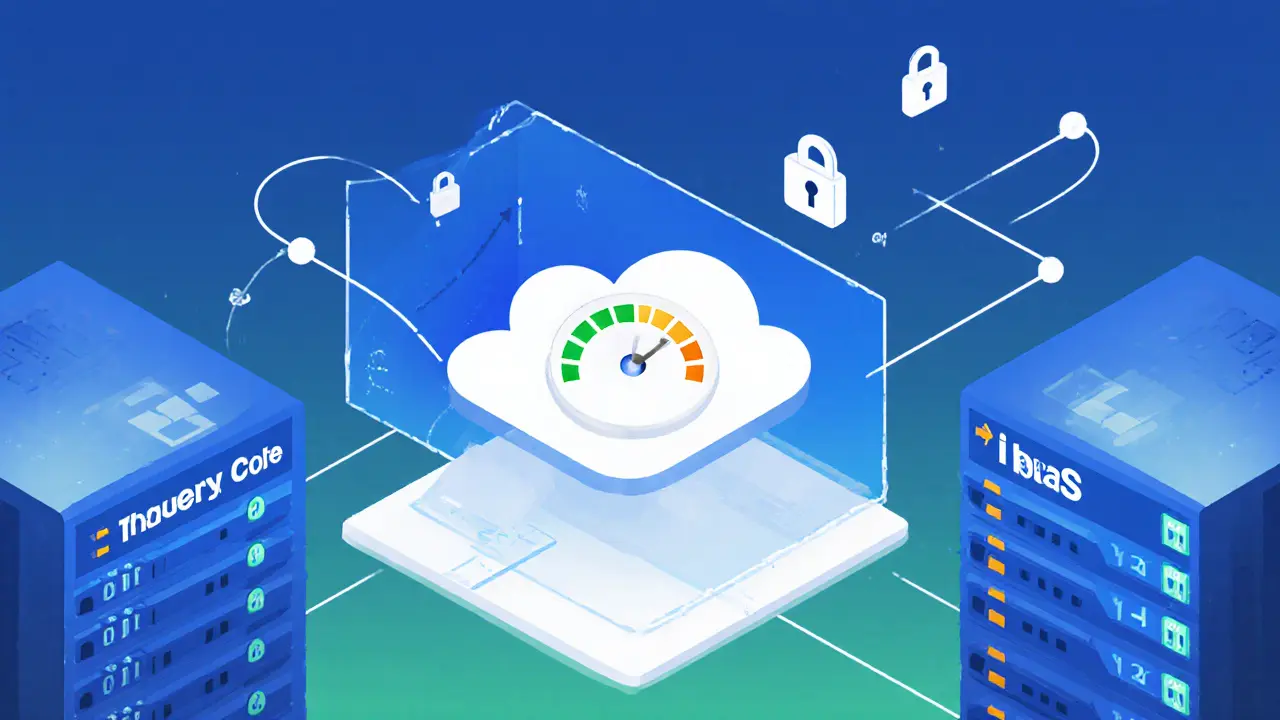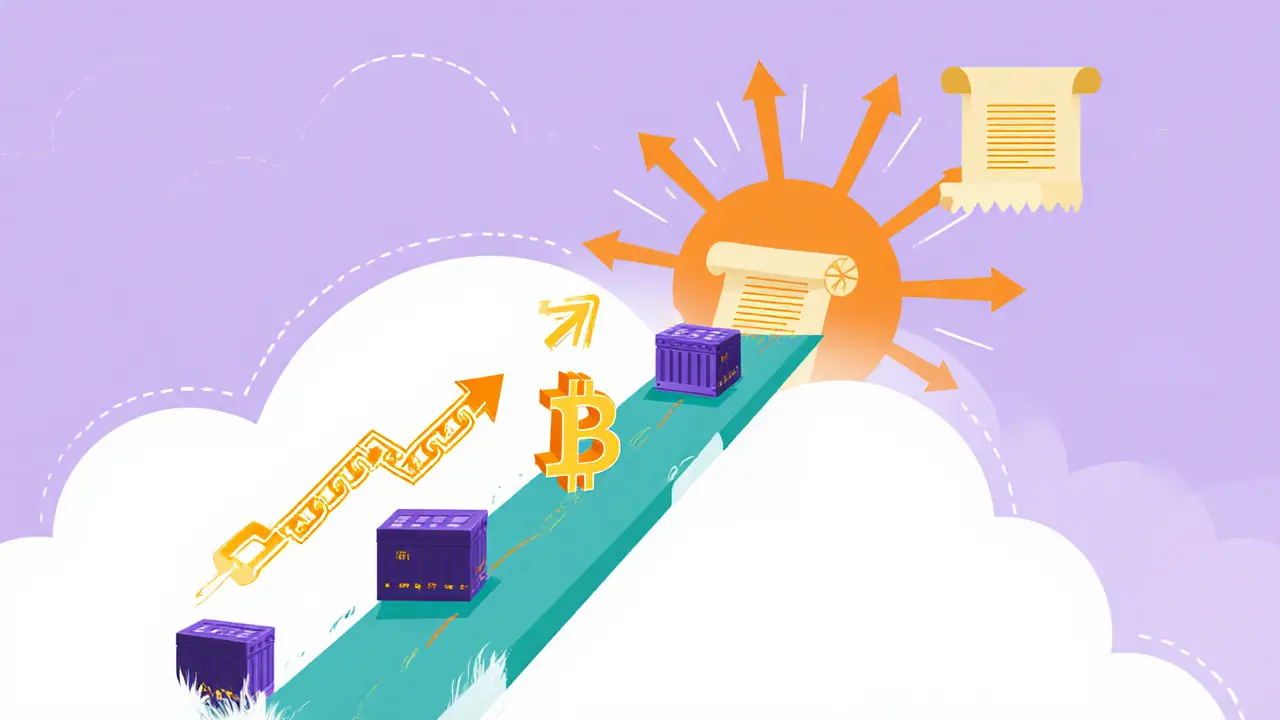How to Seamlessly Integrate BaaS with Your Existing Systems
 Sep, 30 2025
Sep, 30 2025
BaaS Time-to-Market Estimator
Estimate Your Implementation Timeline
Compare time to market between Banking-as-a-Service and building a traditional banking system
Estimated Implementation Times
BaaS Integration
Loading...
Traditional Build
Loading...
Time difference: -
Key Insights
- Speed BaaS typically reduces time-to-market from years to weeks or months.
- Compliance Your BaaS provider handles regulatory requirements like GDPR and PSD2.
- Scalability BaaS solutions scale automatically as your user base grows.
When you hear BaaS integration, you probably picture a wall of code and endless paperwork. In reality, connecting Banking‑as‑a‑Service to your current stack can be split into clear steps, a handful of tools, and a solid security checklist. Below you’ll find a practical road‑map that takes you from the first needs assessment to live, compliant, and scalable embedded finance.
Banking-as-a-Service is a modular, API‑driven offering that lets non‑bank businesses deliver full‑fledged banking features-account opening, payments, card issuance-without building a core banking system from scratch. Think of it as plugging a LEGO brick into an existing LEGO set: the brick (BaaS) brings new functionality, while the set (your legacy ERP, CRM, or e‑commerce platform) stays intact.
1. Identify the Business Need and Choose the Right Provider
- Map the exact banking services you need: instant accounts, card issuance, cross‑border payouts, or DeFi‑style tokenisation.
- Score providers on scalability, API coverage, and regulatory expertise (GDPR, PSD2, CCPA, AML).
- Ask for a sandbox environment-most BaaS firms let you test end‑to‑end flows before committing.
2. Set Up the Integration Layer (iPaaS)
Integration Platform as a Service (iPaaS) sits between your legacy core and the BaaS APIs. It abstracts connector logic, handles data transformation, and provides monitoring dashboards.
Integration Platform as a Service offers pre‑built connectors, visual mapping tools, and orchestration engines that accelerate API integration for finance‑specific use cases (e.g., MuleSoft Finance Accelerator, Dell Boomi Banking, or specialised vertical iPaaS like ApiX‑Drive, which ships with banking‑ready templates).
Typical iPaaS configuration steps:
- Create a secure tenant for your organization.
- Import the BaaS OpenAPI specification.
- Map fields between your internal data model and the BaaS payload (e.g., customer_id ↔ external_account_id).
- Define error‑handling policies and retry logic.
- Enable real‑time monitoring and alerting.
3. Secure the API Contracts
Financial data moves fast, but security can’t be an afterthought. The industry standard stack looks like this:
- OAuth 2.0 provides token‑based delegated access, allowing your app to call BaaS endpoints without storing credentials.
- OpenID Connect adds identity verification on top of OAuth, ensuring the caller is a known user or service.
- TLS 1.3 encrypts data in transit, protecting against man‑in‑the‑middle attacks.
- At‑rest encryption using AES‑256 or cloud‑native key management services (AWS KMS, Azure Key Vault).
Never hard‑code API keys; store them in secret managers and rotate them quarterly.
4. Design Data Flow Patterns
Three common patterns emerge when wiring BaaS to legacy systems:
| Pattern | Use‑Case | Key Considerations |
|---|---|---|
| Data Consistency Sync | Keep customer records identical across CRM and banking ledger | Bidirectional sync, conflict resolution, eventual consistency |
| Composite Service | Build a “pay‑in‑one‑click” UI that pulls balance from core banking and credit limit from a third‑party risk engine | Orchestrate multiple API calls, latency budgeting |
| Multi‑Step Workflow | On‑boarding flow that verifies identity, opens an account, then issues a virtual card | Stateful choreography, compensation actions on failure |

5. Meet Regulatory and Compliance Requirements
Compliance is the gatekeeper for any finance‑related integration. Below is a quick checklist for the major regimes you’ll hit:
- GDPR - encrypt personal data, enable right‑to‑erasure APIs, log consent.
- PSD2 - support Strong Customer Authentication (SCA) and expose open banking APIs if you act as a Account Information Service Provider (AISP).
- CCPA - provide opt‑out mechanisms and clear data‑sale disclosures.
- AML/KYC - integrate watch‑list screening and transaction monitoring services, often bundled by the BaaS provider.
Partner with a provider that already maintains the necessary licences; it saves you months of legal vetting.
6. Extend Functionality with Emerging Tech
While a basic BaaS integration works today, you can future‑proof your stack by adding:
- Blockchain offers immutable transaction logs and can host smart‑contract‑driven escrow for peer‑to‑peer finance.
- Smart Contracts automate settlement rules, reducing manual reconciliation effort (e.g., Ethereum or Hyperledger Fabric).
- DeFi Bridges enable tokenised assets to move between traditional banking ledgers and decentralized networks.
Start with a pilot that logs every blockchain event in your data lake for auditability.
7. Test, Monitor, and Iterate
Testing isn’t a one‑off event. Follow a three‑phase approach:
- Unit & Contract Tests - validate each API contract against the OpenAPI spec.
- End‑to‑End Scenarios - simulate full user journeys (sign‑up → account creation → first payment).
- Production Monitoring - set up dashboards for latency, error rates, and compliance alerts (e.g., anomalous transaction spikes).
Tools like Datadog, New Relic, or the iPaaS built‑in observability suite keep you ahead of issues.

8. Roadmap for Long‑Term Scaling
After the MVP goes live, plan for growth:
- Adopt microservices to isolate banking functions, allowing independent scaling and faster releases.
- Leverage cloud platforms-AWS or Microsoft Azure-for elastic compute, managed databases, and AI‑driven fraud detection.
- Secure a BIN Sponsorship if you need to issue physical or virtual cards without owning a bank identification number yourself early, as it often dictates card‑program timelines.
Quick Comparison: BaaS vs Traditional Banking Build‑Out
| Aspect | BaaS Integration | In‑House Build |
|---|---|---|
| Time‑to‑Market | Weeks‑to‑Months (sandbox → production) | 12‑24 months+ |
| Initial CapEx | Low (pay‑as‑you‑go usage fees) | High (core banking licences, data‑center) |
| Regulatory Burden | Provider‑handled (licensed bank partner) | Fully owned, heavy compliance team |
| Scalability | Elastic via cloud‑native APIs | Limited by on‑prem hardware unless re‑architected |
| Feature Breadth | Modular (add accounts, cards, payments on demand) | Fixed until next development cycle |
Conclusion: Take the First Step Today
Integrating BaaS isn’t a mysterious black box-just a series of well‑defined actions. Start with a clear business case, pick an iPaaS that speaks the language of finance, lock down OAuth and TLS, and run a sandbox pilot. Once you see a real transaction flow, add compliance checks, monitor relentlessly, and then iterate with blockchain or micro‑service extensions as you grow.
What is the biggest advantage of using BaaS over building a core banking system?
Speed. With BaaS you can launch banking features in weeks instead of years, while a licensed partner handles most regulatory and security obligations.
Which security protocols are mandatory for a BaaS integration?
OAuth 2.0 for token‑based access, OpenID Connect for identity, TLS 1.3 for transport encryption, and AES‑256 for data at rest are the minimum accepted standards.
Can I use a generic iPaaS like MuleSoft for banking integration?
Yes, but a finance‑specific iPaaS offers pre‑built connectors, compliance‑ready templates, and industry‑focused monitoring that reduce custom code.
How does GDPR affect BaaS data handling?
You must encrypt personal data, obtain explicit consent, provide data‑subject rights APIs, and keep detailed processing logs. Choose a BaaS partner that offers GDPR‑ready data residency options.
Is blockchain really necessary for a BaaS project?
Not for a basic rollout, but if you need immutable audit trails, tokenised assets, or automated settlement via smart contracts, blockchain adds clear value.